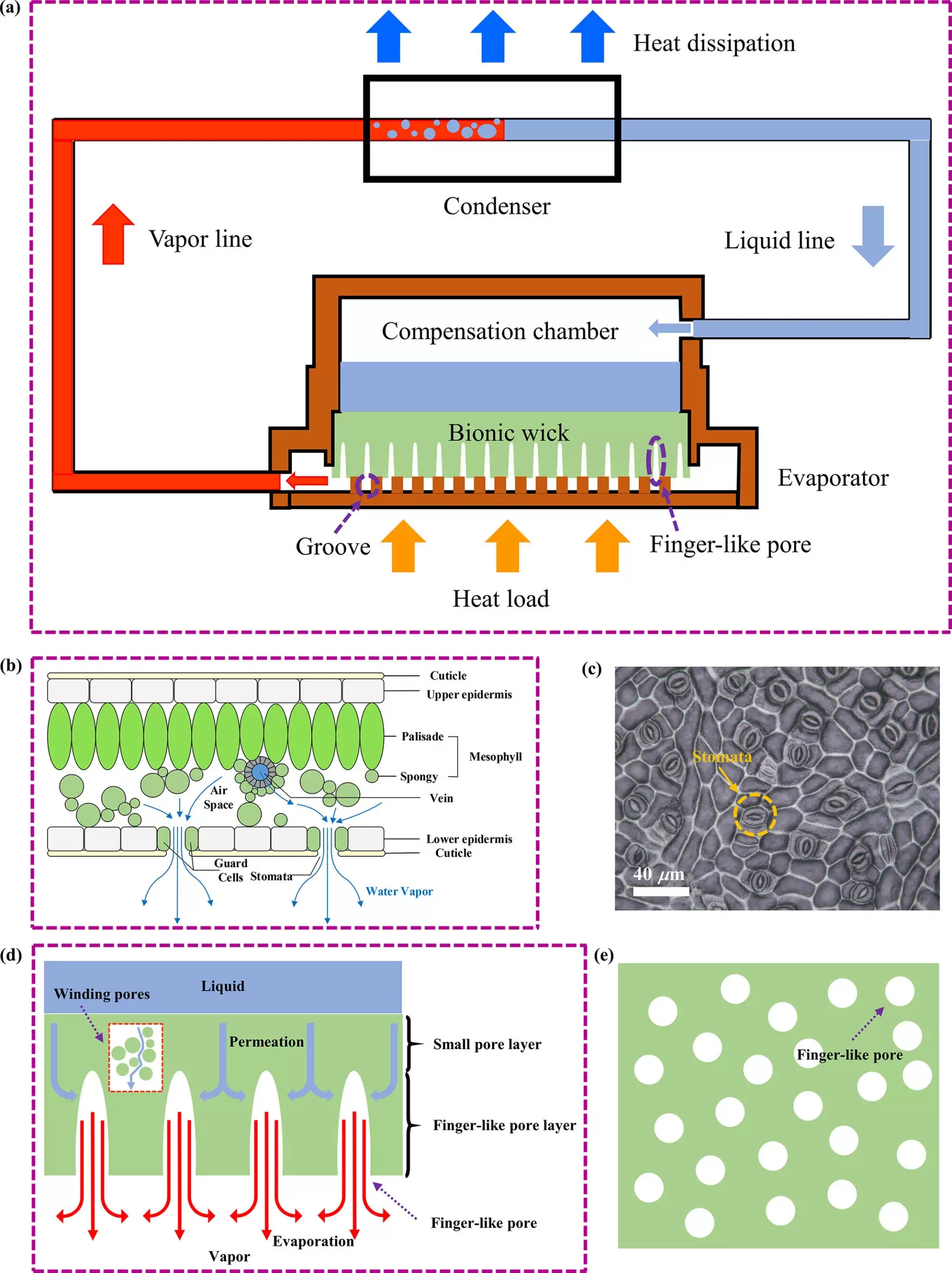In a groundbreaking study led by Prof. Ye Hong and his research team at the University of Science and Technology of China, a new alumina ceramic bionic wick has been developed. This innovative wick is inspired by the natural stomatal array of plant leaves, with finger-like pores that enhance heat transfer capabilities in cooling strategies for high-power-density electronic chips.
As electronic chips continue to advance in performance, their power consumption also increases, necessitating improved cooling strategies. Loop heat pipes (LHPs) have emerged as a promising solution due to their high heat transfer capability and antigravity heat transfer. However, designing the capillary wick structure within LHPs presents challenges, as it requires balancing flow resistance for gaseous working fluids and capillary force for liquid suction.
To address the conflicting requirements of flow resistance and capillary force, Prof. Ye Hong’s team utilized phase inversion tape casting to develop an alumina ceramic bionic wick with finger-like pore structures. These pores, similar to the stomatal structure of plant leaves, increase the gas-liquid interface area, facilitating the expulsion of gaseous working fluids and reducing mass transfer resistance. Additionally, micron-sized pores around the finger-like pores provide the necessary capillary force for liquid replenishment at the gas-liquid evaporation interface.
The start-up and operation tests of the LHP with the alumina ceramic bionic wick confirmed its superior heat and mass transfer performance. By effectively balancing capillary force and flow resistance, this innovative wick offers a novel solution for cooling high-power-density electronic chips. It not only resolves existing challenges but also demonstrates potential application value in efficient thermal management for aerospace, aviation, and microelectronics fields.
The development of the alumina ceramic bionic wick with finger-like pores inspired by the stomatal array of natural leaves represents a significant advancement in cooling technology for high-power-density electronic chips. By drawing inspiration from nature, researchers have successfully overcome major challenges in cooling strategies, paving the way for more efficient and effective thermal management solutions in various industries.


Leave a Reply